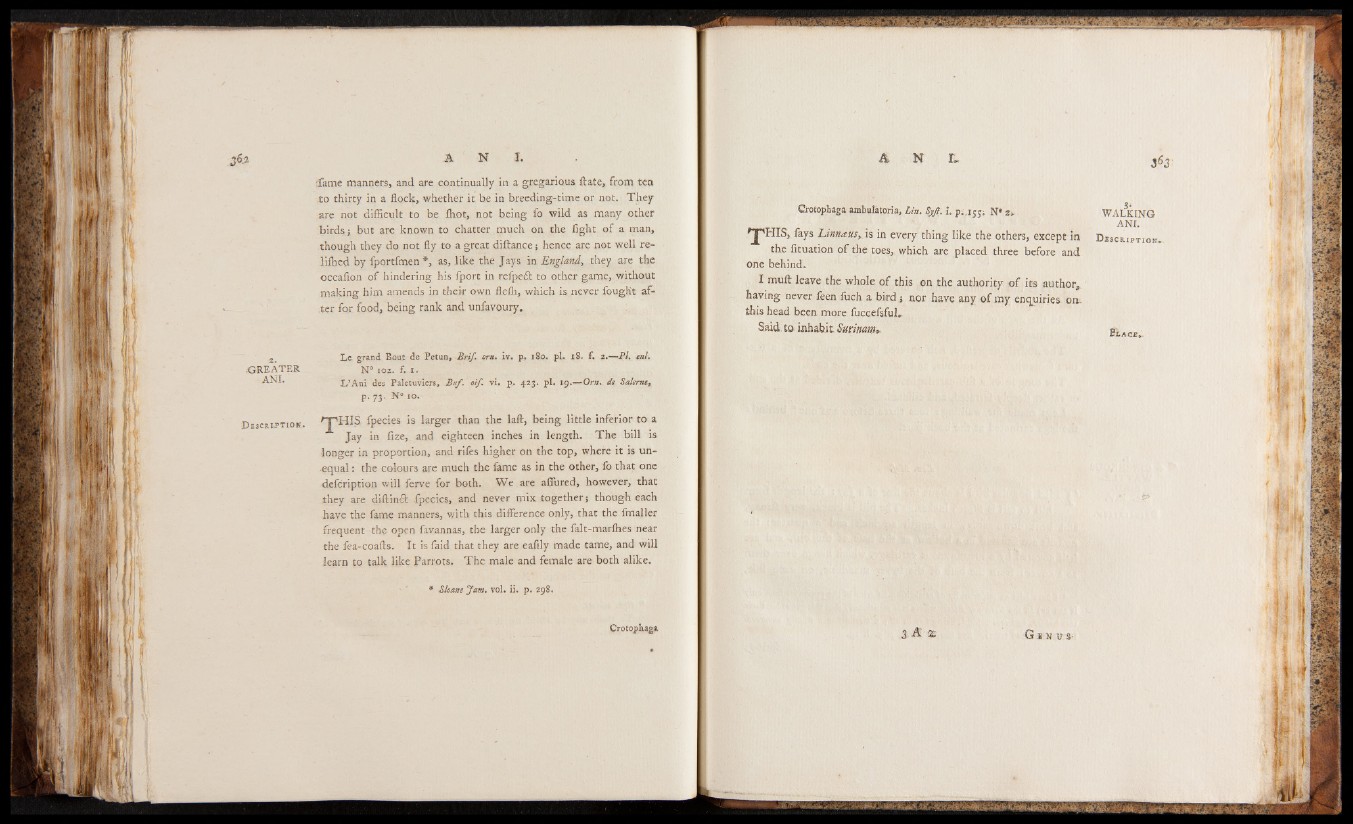
ifame manners, and are continually in a gregarious ftate, from ten
to thirty in a flock, whether it be in breeding-time or not. They
are not difficult to be fhot, not being fo wild as many other
birds; but are known to chatter much on the fight of a man,
though they do not fly to a great diftance ; hence are not well re-
lifhed by fportfmen *, as, like the Jays in England, they are the
occafion of hindering his fport in refped to other game, without
making him amends in their own flefh, which is never fought after
for food, being rank and unfavoury.
z- ^g r e a t e r ANI.
Le grand Bout de Petun, Br if. or». iv. p. 180. pi. 18. f. 2.—PI. tn l.
N° 102. f. I.
L’Ani des Palétuviers, Bu f. oif. vi. p. 423. pi. 19.—Orn. de Saler ne,
p. 73. N° 10.
D escrip tion.. 'T 'H IS fpecies is larger than the laft, being little inferior to a
Jay in fize, and eighteen inches in length. The bill is
longer in proportion, and rifes higher on the top, where it is unequal
: the colours are much the fame as in the other, fo that one
defcription will ferve for both. We are allured, however, that
they are diftind .fpecies, and never mix together; though each
have the fame manners, with this difference only, that the fmaller
frequent the open favannas, the larger only the falt-marfhes near
the fea-coafts. It is faid that they are eafily made tame, and will
learn to talk like Parrots. The male and female are both alike.
# SJoaae Jam, vol. ii. p. 298.
Crotophaga
Crotophaga ambulator!», Lin. St/g. i. p. ijj. N* 2.
^JT'HIS, fays Linnaus, is in every thing like the others, except in
the fituation of the toes, which are placed three before and
one behind.
I muft leave the whole of this on the authority of its author,
having never feen fuch a bird j nor have any of my enquiries on.
this head been more fuccefsful.
Said to inhabit Surinam*
W A L K IN G
A N I.
Descript io Nr.
Hlace,
3 A 2s G l u t s -